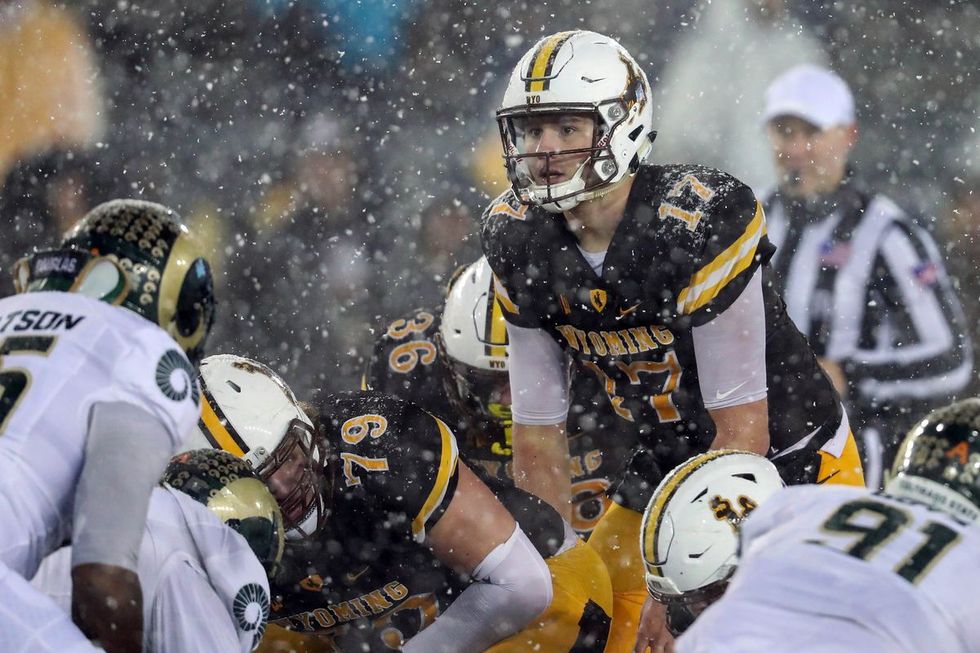As fans of teams drafting in the top ten gear up for the NFL Draft next month, many are looking forward for their next franchise Quarterback. Currently, it seems that three Quarterbacks will be going in the top five of the draft, and with some draft day trades, there could be as many as four quarterbacks picked in the top five.
Investing in a quarterback this early in the draft means coaches and front offices need to nail this pick as many of their careers will be paired with the fortunes of their rookie signal caller. That makes the inexact science if scouting a Quarterback of paramount importance and those fans must hope their teams are focusing on the right traits.
Measurables, athleticism, and combine statistics are all important when an NFL team is considering who to draft in this year’s upcoming draft. For most positions, being an athletic wonder can inflate a prospects draft stock and lead to them being picked higher than they were projected earlier in the draft season. However, there is one position where these “elite” attributes seem to entice coaches and front offices into making franchise-altering decisions on a purely hypothetical best case scenario: Quarterbacks.
We all know that the most important position in the NFL is the Quarterback and to win anything you need to have the right one. The problem lies in the combine-goggles some teams seem to end up wearing as the draft inches closer.
It looks like a foregone conclusion that Sam Darnold will be going to the Browns with the No.1 pick of the draft. Most draft experts and mock drafts seem to have Josh Allen slotted as the second or third best quarterback in this year’s draft, ahead of Baker Mayfield and Josh Rosen. Looking at the numbers throughout the past three years Allen’s aren’t nearly as impressive as Baker Mayfield, nor did he consistently make strides like the other two.
In his three years at the University of Oklahoma, Baker Mayfield displayed outstanding accuracy with his first season as a starter being his lowest completion percentage at 68.4% and improving to just over 70% over his past two seasons. An uptick in efficiency is generally followed by a decrease in yards per attempt, meaning that player is completing more dink and dunk passes, but Mayfield’s yards per attempt average increased each season. Josh Rosen’s career wasn’t as prolific as Mayfield’s but he had twice as many passing yards on the season as Josh Allen with higher average yards per attempt and ten more touchdown passes on the season.
Scouts are ignoring some of the signs from his past performances due to his absolute cannon of an arm. Allen has wowed scouts with a gorgeous seventy-yard throw at the combine, the ability to make every throw at each level of the field, and because he can rifle the ball through tight windows. The raw ability is too much for some coaches to pass up. The issue here arises from the fact that while an elite prospect with above-average arm strength isn’t something to be ignored, all the arm strength in the world doesn’t matter if the throws aren’t completed.
Take a look at past elite prospect Carson Wentz, for example. Wentz ran the same system as Josh Allen while at North Dakota State University but his numbers are drastically different, with his least accurate year coming in his senior season but coming in at a 62.5% completion percentage and a much better touchdown to interception ratio.
Josh Allen is clearly an exciting prospect who is deserving of a first-round draft pick. The issue with him going as high as the top three is that two of those teams have coaching staffs that need to win and may feel pressure from their fan-base and the front office. Rarely do those situations work out in favor of a rookie quarterback with accuracy issues and coming from a school, not in the Power Five conferences. A situation similar to Patrick Mahomes’ in Kansas City would clearly suit the rookie best; allow him to sit behind a bridge starter so he can refine his footwork and mechanics to improve his accuracy and not stunt his development in the long run.
















